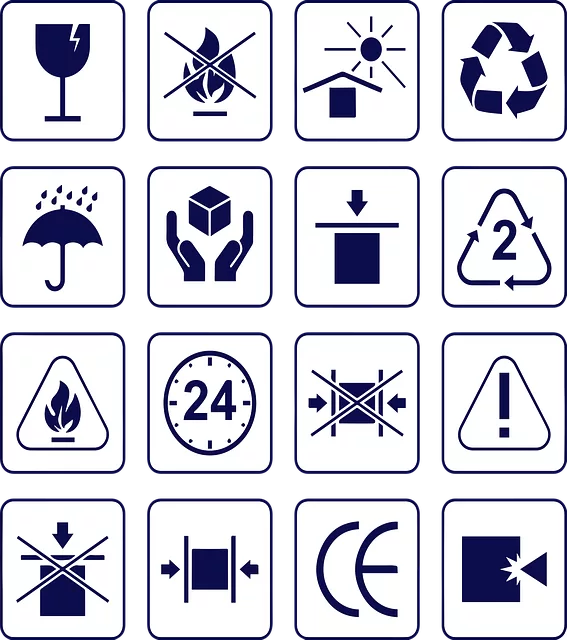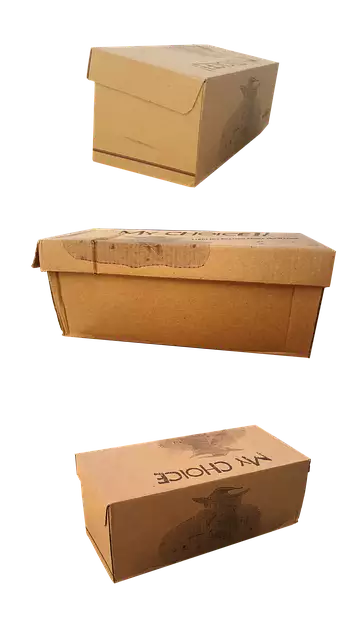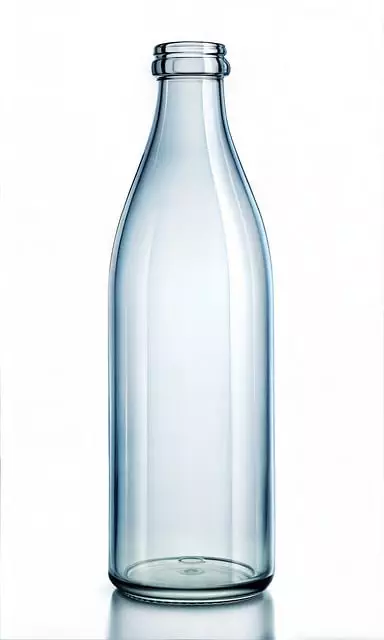The evolution of fragile packaging solutions has led to the emergence of custom fragile packaging that combines robust protection with eco-friendly materials, addressing the dual needs for product safety and environmental sustainability. These innovative packaging designs incorporate sustainable practices, utilizing biodegradable, recycled content, and materials that minimize ecological impact while ensuring delicate items like electronics and fine china are shielded from impacts, shocks, and adverse conditions during transport. The integration of these sustainable materials with cutting-edge design principles ensures both the integrity of sensitive products and adherence to ethical consumerism trends. Companies across various sectors, including pharmaceuticals, are adopting these eco-conscious packaging solutions, demonstrating a commitment to reducing waste and promoting responsible consumption. This transformation in the packaging industry underscores a significant shift towards sustainable practices without compromising on functionality, setting a new standard for integrating environmental stewardship with product protection.
Global commerce relies heavily on robust packaging to protect goods during transit. Among the myriad packaging types, fragile packaging solutions stand out for their critical role in safeguarding sensitive items. This article delves into the pivotal importance of multi-layered, custom fragile packaging designs that offer unparalleled protection. We explore how innovative packaging approaches not only secure products but also contribute to sustainability through eco-friendly options. By examining advanced material technologies and real-world case studies, we’ll shed light on the cutting-edge advancements in this field, ensuring items reach their destination intact while respecting environmental imperatives.
- Understanding the Necessity for Multi-Layered Fragile Packaging Solutions
- Key Components of Effective Custom Fragile Packaging Designs
- The Role of Sustainability in Eco-Friendly Fragile Packaging Innovations
- Advanced Material Technologies for Enhanced Protection in Fragile Packaging
- Case Studies: Successful Implementations of Fragile Packaging Solutions in Various Industries
Understanding the Necessity for Multi-Layered Fragile Packaging Solutions

In an era where consumer goods are transported across vast distances, the integrity of their containers is paramount. Multi-layered fragile packaging solutions have emerged as a critical response to the need for protecting delicate items during transit. These advanced systems go beyond the basic functionality of traditional packaging, offering a combination of materials that work in concert to provide unparalleled protection. Custom fragile packaging, tailored to the specific dimensions and vulnerabilities of the product it houses, has become an industry standard for sensitive merchandise. This bespoke approach ensures that every item, from fine china to high-end electronics, is cushioned against potential impacts, shocks, and environmental factors that could compromise its integrity.
Moreover, the environmental consciousness of modern consumers has sparked a demand for sustainable packaging options. Eco-friendly fragile packaging solutions are not only kinder to the planet but also resonate with the growing movement towards sustainability. These green alternatives incorporate recyclable and biodegradable materials that reduce the ecological footprint without compromising on protection. By leveraging innovative designs and environmentally responsible materials, businesses can offer packaging that safeguards products while demonstrating a commitment to environmental stewardship. This dual focus on functionality and sustainability in multi-layered fragile packaging solutions is a testament to the industry’s ability to adapt and respond to evolving consumer needs and societal expectations.
Key Components of Effective Custom Fragile Packaging Designs

Custom fragile packaging designs play a pivotal role in safeguarding delicate items during transit, ensuring they reach their destination intact. Effective packaging solutions for fragile items must incorporate several key components to achieve this goal. Firstly, the selection of appropriate materials is paramount; these materials must offer both cushioning and protection against impact. High-grade corrugated cardboard or molded pulp are excellent choices for a sturdy base layer. Additionally, internal padding such as bubble wrap, foam peanuts, or air cushions can be strategically placed to absorb shock and prevent movement within the package.
Another critical aspect of custom fragile packaging is its ability to be eco-friendly without compromising on protection. Sustainable materials like recycled content paperboard, biodegradable peanuts, or reusable fabric pouches not only reduce environmental impact but also resonate with consumer values towards sustainability. Designs should also consider the ease of opening and closing, incorporating features like flip-top closures, tape seals, or adhesive flaps to ensure the packaging remains sealed under stress. Adhering to these principles in design ensures that custom fragile packaging not only protects the contents but also aligns with modern environmental standards.
The Role of Sustainability in Eco-Friendly Fragile Packaging Innovations

In the realm of packaging, the imperative for sustainable practices has led to significant innovations in fragile packaging solutions. Custom fragile packaging now incorporates eco-friendly materials that offer both protection and environmental responsibility. These advancements are a response to growing consumer awareness and regulatory pressures that underscore the importance of reducing the carbon footprint associated with packaging waste. Biodegradable options, recycled content, and reduced material usage are key elements in this evolution. The goal is to create packaging that not only safeguards products from damage during transit but also aligns with global sustainability goals. Companies are increasingly adopting designs that minimize environmental impact while maintaining the integrity of the package to ensure safe delivery of goods. This dual focus on functionality and ecological considerations has become a critical differentiator in the market, as consumers and businesses alike seek solutions that align with their sustainability commitments.
The transition towards eco-friendly fragile packaging is not merely a trend but a strategic shift in the industry. Custom solutions now prioritize the use of renewable resources and energy-efficient production processes. These efforts are complemented by ongoing research into alternative materials, such as plant-based substrates and biodegradable films, which can provide equivalent or superior performance to traditional packaging options. The adoption of these eco-friendly fragile packaging solutions not only contributes to waste reduction but also opens up opportunities for brand differentiation and customer loyalty. As the demand for sustainable packaging grows, innovation continues to drive the development of new materials and designs that meet both the protective needs of products and the environmental standards set by consumers and regulatory bodies. This synergy between protection and sustainability is reshaping the packaging industry, offering a path forward that aligns with the global ethos of conservation and stewardship.
Advanced Material Technologies for Enhanced Protection in Fragile Packaging

In the realm of product protection, the demand for sophisticated and reliable fragile packaging solutions has never been greater. Advanced material technologies are at the forefront of this evolution, offering enhanced protection for a variety of products that require special handling due to their delicate nature. These innovations not only provide superior shock absorption and impact resistance but also cater to the growing need for sustainable practices in packaging. Eco-friendly fragile packaging options are becoming increasingly common, integrating biodegradable materials and recycled content to reduce environmental impact without compromising on safety. Custom fragile packaging solutions now leverage cutting-edge designs and materials science to create bespoke protective envelopes tailored to the precise needs of sensitive items. From thin-film laminates to molded pulp inserts, these advanced solutions ensure that products are safeguarded throughout their distribution journey, from the point of manufacture to the moment of delivery into the consumer’s hands. The integration of these technologies not only fortifies the packaging against potential damage but also aligns with the ethical imperative to minimize waste and promote responsible consumption.
Case Studies: Successful Implementations of Fragile Packaging Solutions in Various Industries

In recent years, the demand for robust yet sustainable packaging solutions has surged across various industries. Companies specializing in fragile packaging solutions have risen to the challenge, offering innovative approaches that not only protect products but also prioritize environmental stewardship. One notable case study is a leading electronics manufacturer that transitioned to custom fragile packaging made from recycled materials. This initiative resulted in a significant reduction of packaging waste and improved product safety during shipping. The new packaging design, which incorporates advanced shock-absorption technology, has led to a marked decrease in return rates due to damage—a testament to the effectiveness of tailored fragile packaging solutions.
Another example is found within the pharmaceutical sector where maintaining the integrity of products is paramount. A pharmaceutical company implemented an eco-friendly fragile packaging solution that uses biodegradable materials and embedded sensors for real-time monitoring of temperature and shock during transport. This cutting-edge approach not only ensures the drugs’ efficacy upon arrival but also aligns with the industry’s growing commitment to sustainability. The success of this implementation has set a new standard, demonstrating that environmental responsibility can coexist with stringent quality control in fragile packaging solutions.


